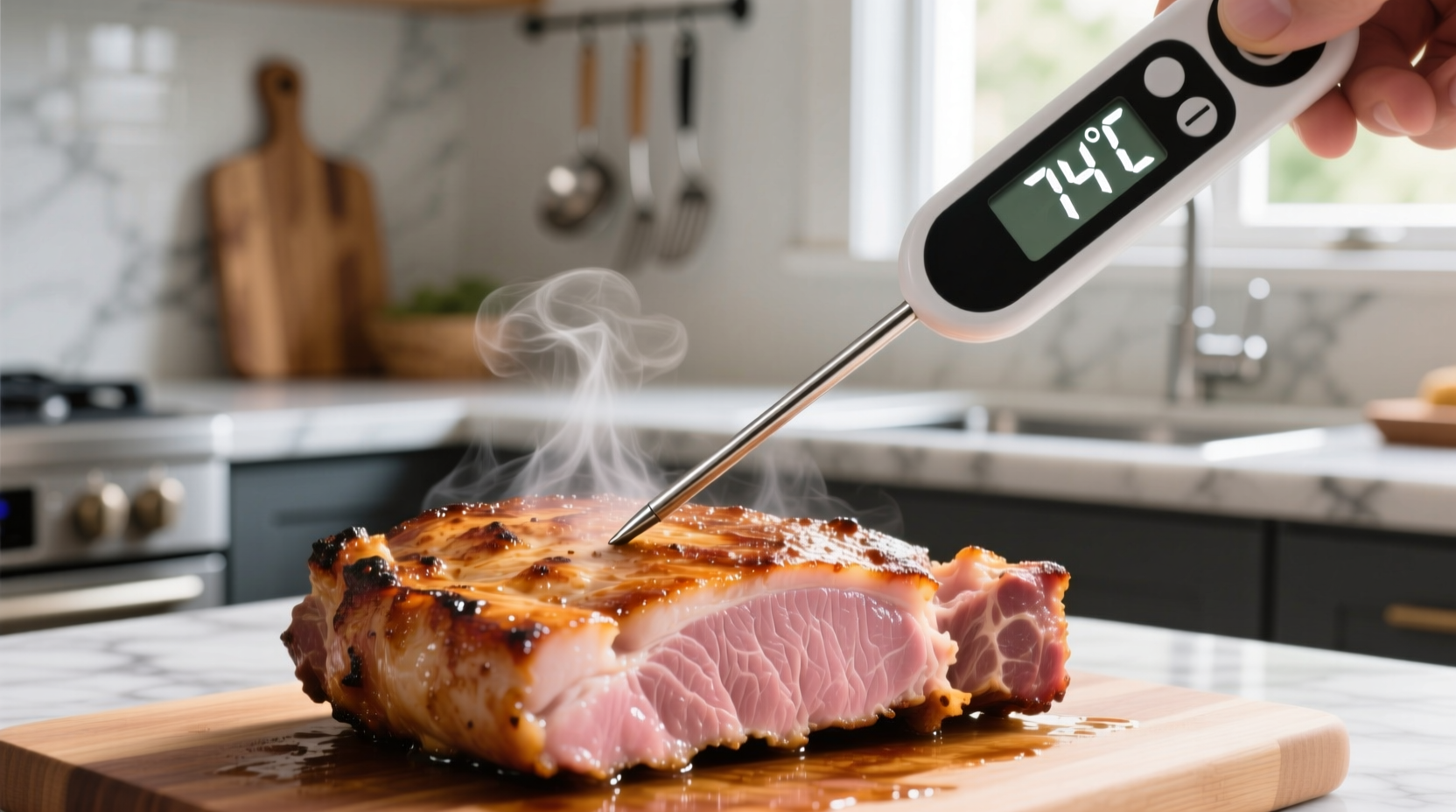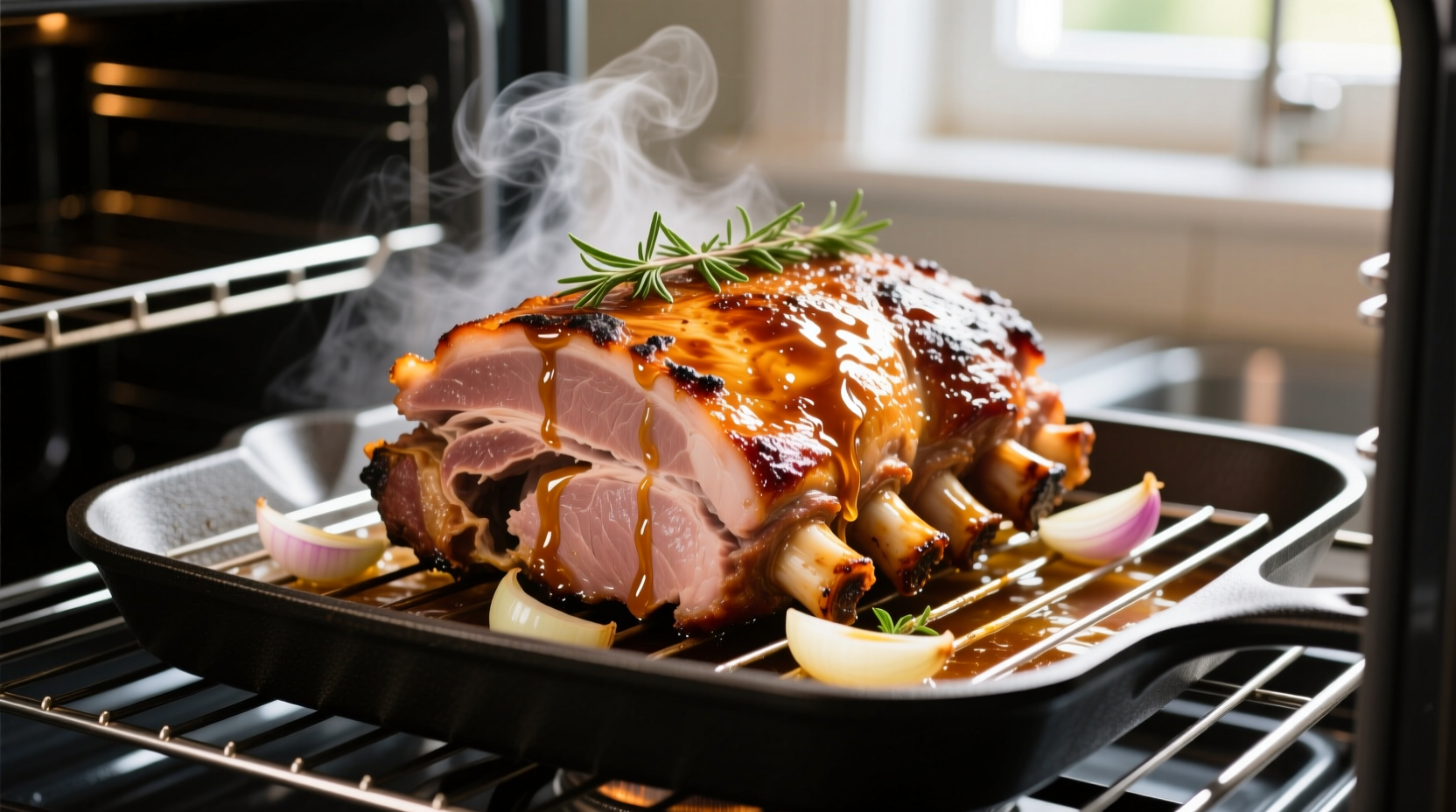Pork should be cooked to an internal temperature of 145°F (63°C) with a 3-minute rest period. Cooking times vary by cut: tenderloin takes 20-25 minutes at 400°F, loin roasts need 20-25 minutes per pound at 350°F, and chops require 4-6 minutes per side on the grill. This guide provides precise cooking times for every pork cut, USDA-approved temperature guidelines, and professional techniques to ensure perfectly cooked pork every time.
Nothing ruins a meal faster than overcooked, dry pork or undercooked meat that poses food safety risks. Whether you're preparing a weeknight dinner or hosting a special occasion, knowing exactly how long to cook pork transforms your results from hit-or-miss to consistently perfect. In this comprehensive guide, you'll discover science-backed cooking times for every cut, professional chef techniques, and foolproof methods to achieve juicy, flavorful pork that's safe to eat.
Why Pork Cooking Times Vary: The Science Behind Perfect Results
Understanding why cooking times differ across pork cuts helps you adapt when recipes don't match your specific situation. The USDA Food Safety and Inspection Service confirms that thickness, fat content, and starting temperature significantly impact cooking duration. A 1-inch pork chop reaches safe temperatures faster than a 3-inch loin roast, while marbled cuts like pork shoulder need longer cooking to render fat properly.
Food safety remains paramount—undercooked pork can harbor pathogens like Trichinella spiralis. The Centers for Disease Control and Prevention reports that proper cooking eliminates these risks. Modern pork is safer than ever, but precise temperature control ensures both safety and quality.
Essential Pork Cooking Reference Guide
Bookmark this quick-reference chart for your next pork preparation. All times assume preheated cooking environments and room-temperature meat placement.
| Pork Cut | Cooking Method | Time | Target Temperature |
|---|---|---|---|
| Pork Tenderloin (1-1.5 lbs) | Oven (400°F) | 20-25 minutes | 145°F + 3-min rest |
| Pork Loin Roast (3-5 lbs) | Oven (325°F) | 20-25 min/lb | 145°F + 3-min rest |
| Pork Chops (1-inch) | Grill | 4-6 min/side | 145°F + 3-min rest |
| Pork Shoulder (Boston Butt) | Slow Cooker | 8-10 hours | 195°F (pulls apart) |
| Ground Pork | Stovetop | 5-7 minutes | 160°F (no rest) |
How to Verify Pork Doneness: Beyond the Clock
While timing provides a starting point, internal temperature remains the only reliable indicator of doneness. The National Pork Board emphasizes that visual cues like color can be misleading—modern pork often remains slightly pink at safe temperatures.
For accurate results:
- Use an instant-read thermometer inserted into the thickest part
- Check multiple spots in larger cuts
- Allow proper resting time (3 minutes for whole cuts, no rest for ground pork)
During resting, residual heat continues cooking the meat (carryover cooking), raising the temperature 5-10°F. This explains why removing pork at 140°F yields 145°F after resting—critical knowledge for how long to cook pork chops without drying them out.

Cooking Method Deep Dive: Optimizing for Your Equipment
Oven Roasting: Precision for Whole Cuts
For pork loin roast cooking time, preheat your oven to 325°F. Sear first for better flavor, then roast until reaching 140°F internally. The FDA Food Code specifies that whole-muscle pork requires the 145°F + rest protocol. Bone-in cuts need approximately 15% longer cooking than boneless equivalents.
Grilling: Mastering High-Heat Cooking
When determining how long to cook pork chops on the grill, use two-zone cooking. Sear over direct heat (2 minutes per side), then move to indirect heat until reaching 140°F. Thicker chops benefit from closing the lid to create an oven-like environment. Never press down on chops—this squeezes out precious juices.
Slow Cooking: Transforming Tough Cuts
Pork shoulder requires different metrics than lean cuts. For pulled pork, cook until internal temperature reaches 195-205°F, allowing collagen to fully break down. This typically takes 1.5 hours per pound at 300°F. The University of Illinois Extension confirms that low-and-slow methods yield more tender results than higher temperatures.
Avoiding Common Pork Cooking Mistakes
Even experienced cooks make these errors that affect how long pork should cook and final quality:
- Skipping the rest period: Cutting immediately causes 30% more juice loss
- Over-relying on color: Pinkness doesn't indicate undercooking in modern pork
- Crowding the pan: Lowers temperature and creates steam instead of sear
- Not accounting for carryover cooking: Leads to overcooked results
Special Considerations for Different Pork Cuts
Each cut has unique requirements that impact cooking time for pork tenderloin versus shoulder:
- Tenderloin: Cook quickly at high heat; overcooking by just 5°F dries it out
- Rib chops: Fat cap must render properly—cook fat-side down first
- Ground pork: Must reach 160°F (no rest period) due to increased surface area
- Cured products: Pre-cooked hams only need reheating to 140°F
Temperature Troubleshooting Guide
When your pork isn't turning out right, these adjustments solve common issues:
- Dry results: Cook to lower end of temp range (140°F before resting) or reduce cooking time by 15%
- Undercooked center: Use indirect heat methods or tent with foil to slow exterior cooking
- Inconsistent doneness: Uniform thickness matters—pound thicker areas to even thickness
- Bland flavor: Season at least 45 minutes before cooking for better penetration
Conclusion: Mastering Pork Cooking Times
Knowing exactly how long to cook pork transforms your cooking from uncertain to confident. By understanding the relationship between cut, cooking method, and target temperature, you'll consistently achieve restaurant-quality results at home. Remember that timing provides a framework, but temperature verification remains essential for both safety and quality. Implement these techniques on your next pork preparation and experience the difference precise cooking makes.











 浙公网安备
33010002000092号
浙公网安备
33010002000092号 浙B2-20120091-4
浙B2-20120091-4